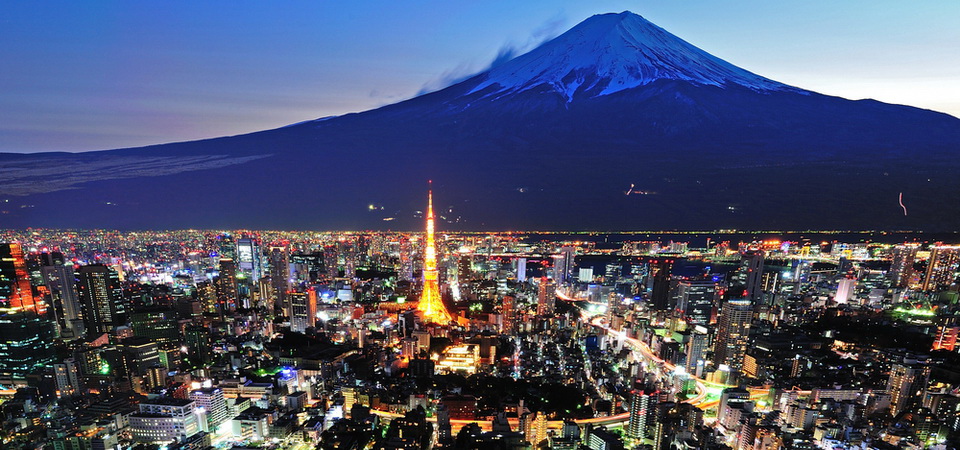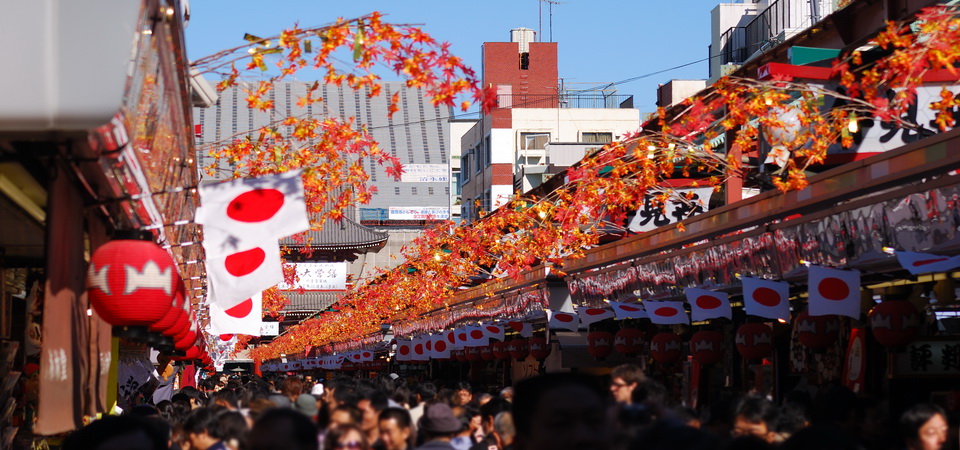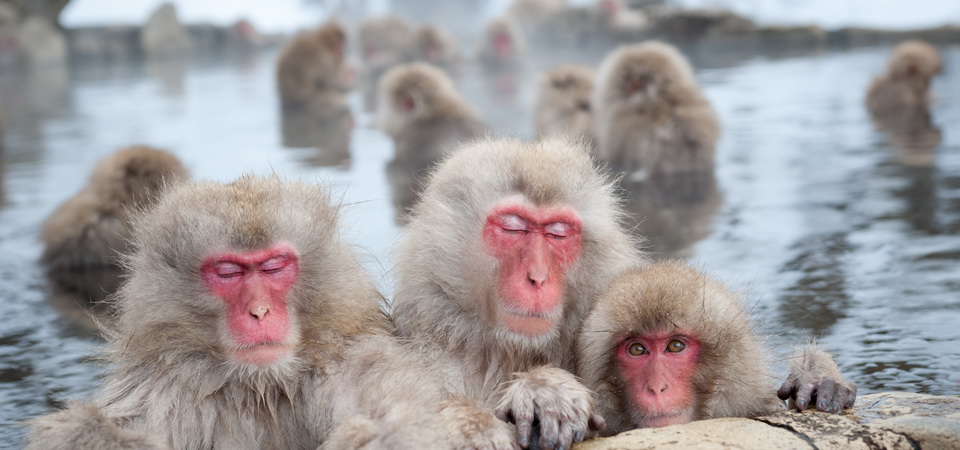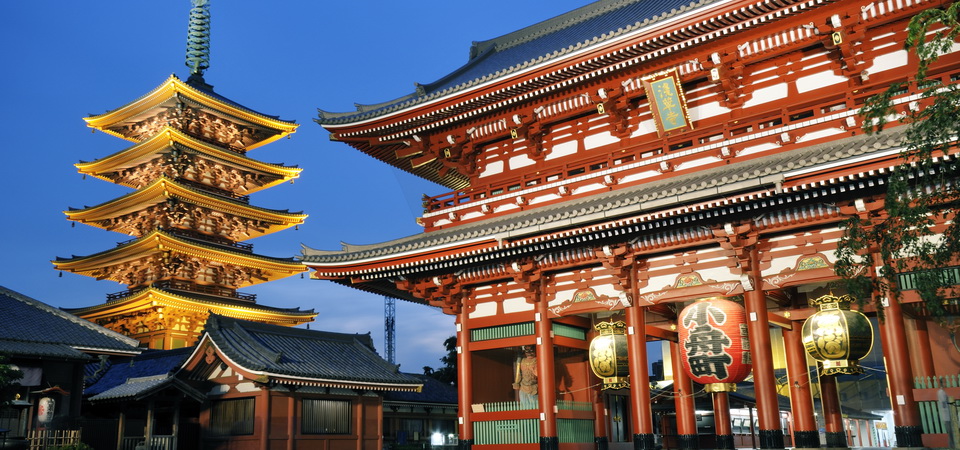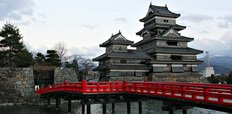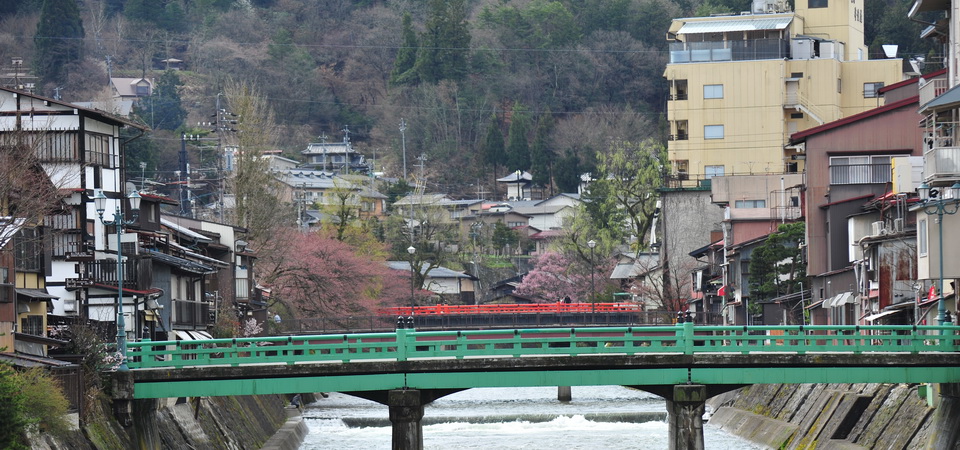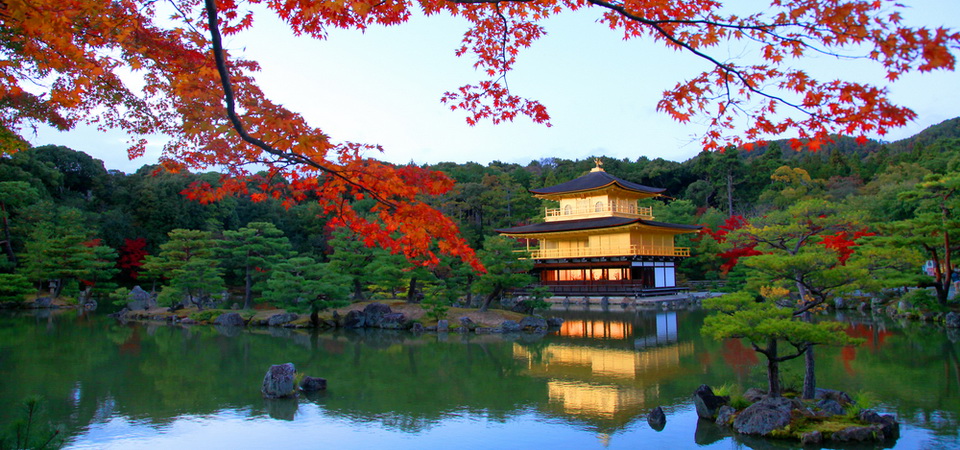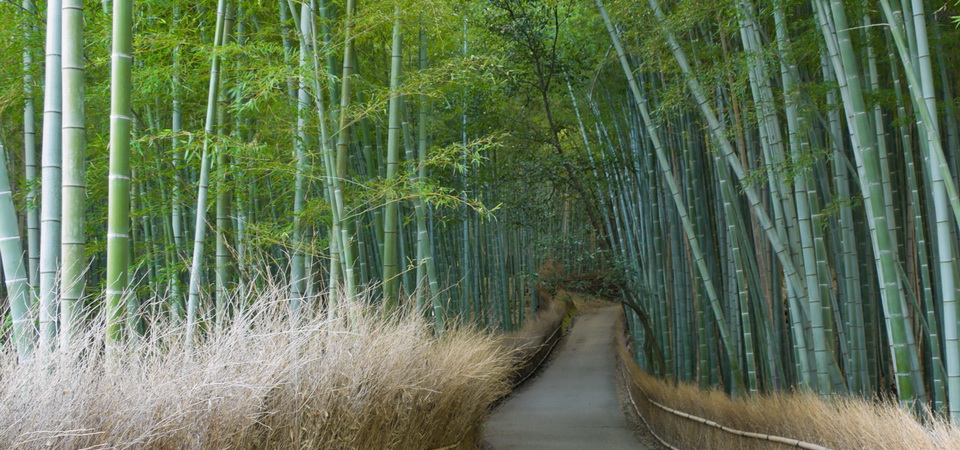Head to the hills for a Japan adventure like none other. Visit the ‘alps’ of Japan to discover pristine alpine towns filled with history and culture. Hike along a former trading route, take a scenic train journey and soak in mountain-side onsens whilst enjoying breath-taking landscapes at every turn.
Itinerary
📍 Narita International Airport (NRT) to Central Tokyo: 1.5 h Haneda International Airport (HND) to Central Tokyo: 50 min
Upon arrival to Tokyo’s airport, our representative will be waiting to assist with transport into the city (either helping to board the right train or find the appropriate shuttle bus). After reaching the hotel and checking in, the remainder of the day is free at leisure.
The rest of the day is at leisure.
Overnight in Tokyo
Inclusions:
📍 Start (guided tour): 09:00 Duration: 8 h *including pick-up/drop-off and transit times
Meet up with the guide this morning at the hotel and head for Hamarikyu, a Japanese garden that once served as a private villa of a powerful feudal lord during the Edo period. Its wide collection of seasonal flowers makes it one of the most visited gardens in Tokyo, however another of its most famous attractions is its teahouse, Nakajima-no-Ochaya.
Take a break here and enjoy a cup of freshly made green tea while the guide shares interesting facts about sado (tea ceremony).
From the park, take a scenic river cruise to Asakusa, a part of Tokyo’s shitamachi or old town. Asakusa is the city’s oldest Geisha district and also home to Senso-ji, Tokyo’s oldest Buddhist temple. The streets around Senso-ji feature many traditional shops and are a delight to wander through.
The tour ends with a visit to Meiji Jingu, Tokyo’s most famous shrine dedicated to Emperor Meiji and a popular venue for traditional Shinto weddings.
The shrine is also home to around 120,000 trees, making it easy to forget that just outside its grounds are two of the city’s popular shopping districts, Harajuku and Omotesando.
Note: The order of this itinerary may change depending on the location of the hotel.
Overnight in Tokyo.
Inclusions:
☕ Breakfast
📍 Tokyo Station to Yudanaka Station: 2.5h
Today is a self-guided day.
Depart from Tokyo Station for Nagano via the Hokuriku bullet train, which can reach speeds of up to 260 kph. Upon arriving at Nagano Station, transfer to the limited express train that will run to Yudanaka Station, where a complimentary shuttle bus is provided by the night’s ryokan (traditional Japanese-style inn, available between 15:00 and 18:00.
Kokuya is a traditional Japanese-style hotel (ryokan) with a 400-year history. Its present owner is the 16th generation to run the place. The ryokan has six different, 100% natural hot springs, which are rich in health-giving minerals that benefit your muscles, joints, and skin.
The ryokan is located on the Shibu Onsen “spa street,” which has nine public onsen open for use. Take note of the local people strolling down the street in yukata (light robes) as they head for a soak in one of these hot spring baths.
Dinner tonight will be a kaiseki, or Japanese traditional meal, comprised of nine or more dishes. The meal is made up of seasonal dishes using only the freshest of local Nagano ingredients.
Overnight in Shibu Onsen
Inclusions:
☕ Breakfast
📍 Yudanaka Station to Nagano Station: 50 min
Suggested Self-Guided Itinerary:
This morning, visit the Jigokudani Park, home to the famous Snow Monkeys. Jigokudani literally means “hell’s valley” due to the steam and boiling water that bubble out of small crevices in the frozen ground. It is in these hot spring baths where the resident Japanese Macaques like to soak. Going to the park from the nearest bus stops and parking lot can only be done on foot, which requires around half an hour of trekking. Comfortable footwear is strongly recommended (and warm clothes especially during the colder months).
The monkeys live in large social groups, and it can be quite entertaining to watch their interactions. Accustomed to humans, they can be observed from very close and almost completely ignore their human guests. Although the monkeys live in the area all year round, they are particularly numerous during the colder months (December – April) while less likely to be spotted in Autumn.
After a last soak in the onsen, is time to go back to Nagano, the biggest city of Japanese Alps, home of the Zenkoji Temple, one of the most visited temples in Japan founded 1400 years ago.
Here join a Buddhist meditation ‘Zazen’ in one of the buildings of the Zenkoji and focus on the posture, breathing and mindfulness following the instruction of a Zenkoji’s monk.
Assist to the “Goma Prayer”, where a qualified monk perform the Fire Ceremony burning the wooden prayer stick in a consecrated flame.
This ceremony is believed to give spiritually and psychologically cleansing for participants, removing negative energies and helping the journey to the enlightenment.
Time
Starting Time 13:30
Duration 2h
Overnight in Nagano
Inclusions:
☕ Breakfast
Self-Guided Itinerary (1): Kamikochi
Make an early start and travel to Kamikochi, a popular nature trail in the valleys of Matsumoto. It is known for the pristine Azusa-gawa River and the surrounding Japanese Alps.
Start from Taisho-ike Pond, with its mirror-like waters reflecting the Hotaka Mountain Range and Mt. Yakedake, an active volcano that stands at 2,455 meters above sea level.
Continue walking towards the bus terminal, passing by Tashiro Marsh, to secure a seats on the bus.
Just nearby is Kappabashi Bridge, one of the places in Kamikochi that offers the most picturesque views of the area.
From this point, another hour of trekking heads to Myojin-bashi Bridge, the gateway to Hotaka-jinja Shrine and Myojin-ike Pond. There is a small dining place here called Kamonjigoya that serves grilled freshwater fish and soba.
The trail from Myojin area back to the opposite side of Kappa-bashi is another hour of nature trekking that wanders through the serene woods of this well-protected national park.
Notes:
- This is an easy-to-moderate course that can be accomplished in around 4 hours, including short restroom and meal breaks.
- Roundtrip tickets from Matsumoto to Kamikochi can be added in the package (advance booking and supplementary charges required).
- Kamikochi is only open from mid-April to mid-November, when the roads are not closed due to heavy snow.
Distance and journey time (approximation):
Matsumoto Station to Shin-Shimashima Station: 30 min
Shin-Shimashima Station to Taisho-ike Bus Stop: 1 h
Self-Guided Itinerary (2): Togakushi
Make the journey to Togakushi Shrine, consists of a lower, a middle and an upper shrine in the forested mountains northwest of Nagano's city center.
The shrines of Togakushi are connected both by roads and hiking trails up the mountain's forested slopes. Visitors would first arrive at the torii gate of the lower shrine, where a long flight of stairs leads to its praying hall. A two kilometer ascent from here takes you to the middle shrine, which stands at the top of a small town of shops and restaurants. The shrine features a praying hall with nice architecture, a small waterfall, and sacred trees which are over 800 years old.
An alternative trail to the upper shrine leads via Kagamiike ("Mirror Pond"), a serene pond which reflects the surrounding mountain landscape nicely. Note also that the Togakure Ninpo Museum is situated just next to the entrance to the upper shrine, while the Kids Ninja Village is close in proximity to the middle shrine, making interesting additions to the shrine visits.
Distance and journey time (approximation):
Nagano Station to Togakushi Okusha Bus Stop: 45 min
Inclusions:
☕ Breakfast, 🍗 Dinner
📍 Distance and journey time (approximation): Nagano Station to Matsumoto Station: 50 min
Today is a self-guided day.
Travel to Matsumoto, a small castle town surrounded by rice fields, vineyards, wasabi farms and the great Japan Alps.
Suggested Self-Guided Itinerary:
Spend the afternoon strolling around the city.
Visit Matsumoto Castle, one of the only twelve remaining original castles in Japan. It is well-distinguished for its black exterior, red arch bridge and a view of Japan’s Alps in the background.
Right outside the castle grounds is Nakamachi-dori, a historical merchant district line with well-preserved old buildings, including some storehouses characterized by their thick, white-painted walls.
Overnight in Matsumoto
Inclusions:
☕ Breakfast, 🍗 Dinner
📍 Distance and journey time (approximation): Matsumoto Station to Kiso-Fukushima Station: 40 min
Today is a self-guided day.
Start the journey in the afternoon through Nakasendo in Kiso Valley, one of the five routes that branched off the former capital of Japan.
Upon arrival at Kiso-Fukushima Station, check-in into the Ryokan.
Overnight in Kiso-Fukushima
Inclusions:
☕ Breakfast
📍 Kiso-Fukushima station to Nakatsugawa station: 0.5 h Nakatsugawa station to Magome: 15 min (bus or taxi)
Today start the journey to Tsumago, one of the post towns that flourished in the Edo Period. Tsumago is now a Nationally Designated Architectural Preservation Site, thanks to the collective effort of its locals to preserve most of the remaining historical buildings.
The trail that runs between Magome and Tsumago is perhaps the most popular section of Nakasendo.
Leave the accommodation in the morning after a Japanese-style breakfast and ride a train to Nakatsugawa and later, a bus to Magome, the start of the Nakasendo Trail. Today’s walk will alternate between well preserved old towns, fields of local farmers and peaceful woodlands.
This trail can be completed in about 3 hours, including some quick breaks (i.e. restroom, tea/coffee).
After concluding the trail, ride a bus to Nagiso and a train to the ryokan in Kiso-Fukushima. Upon arrival, enjoy a nice soak in the onsen before a plentiful dinner.
Overnight in Kiso-Fukushima
Optional Service: There is an optional private transfer from the end of the trail to the ryokan (extra charge).
Inclusions:
☕ Breakfast, 🍗 Dinner
📍 Kiso Fukushima Station to Kyoto Station: 3 h
Today is a self-guided day.
Take one last soak in the onsen before starting the journey to Japan’s cultural capital, Kyoto. Kyoto is home to around 2,000 shrines and temples, including 17 UNESCO World Heritage Sites.
The rest of the day is at leisure.
Optional Evening Tour: A Taste of Gion Food Tour
Kyoto’s Gion district is often cited as many a visitor’s favourite part of the city. The historic cobblestone streets are lined with traditional, narrow wooden buildings known as machiya, teahouses known as ochaya, and traditional shops selling local specialities.
The first stop is a lively standing bar, where guests can enjoy a drink and delicious local bar food as a prelude to the rest of the tour. After this, take a leisurely stroll around Gion. As most geisha start to entertain at 18:00, the chance of seeing elegantly attired geisha darting along the winding streets to their engagements is quite high.
Then, head to a cozy restaurant owned by a charming and amiable woman from Kyoto who prepares each meal herself. Enjoy an entertaining conversation with her, while sampling each dish, which is prepared with the utmost care and attention, using the finest seasonal ingredients.
The final stop of the tour is a sake bar with a location so clandestine even locals struggle to find it. Partake in different varieties of sake, chosen to complement the selection of nibbles.
After this delightful evening well spent, either return to the accommodation or continue to explore the city independently.
Time:
Start: 17:00
Duration: approx. 3 h
Overnight in Kyoto
Inclusions:
☕ Breakfast
📍 Time: Start: 09:15 Duration: 8 h Journey: approx. 20 km
This morning, head towards the designated meeting point in Kyoto to meet up with the guide and to pick up the bicycles for the tour.
Embark on an active day tour of Japan’s cultural capital, joining a local guide for this Kyoto by bike experience. Hop on the bikes and pedal a short distance to Nishi Hongan-ji Temple, one of the largest temple complexes in the city.
Then cycle to Nijo Castle, one of Kyoto’s UNESCO World Heritage Sites. Take a tour through this massive compound, stopping to admire its intricately painted sliding doors and unusual ‘chirping’ floors. Learn about the history of the castle and the symbolic meaning of its architecture.
Take a break for a quick lunch before returning to the bikes for a ride to Kinkaku-ji Temple. This beautiful structure was built as a retirement village of a shogun but, after his death, was converted into a Zen Buddhist temple. The top two floors are covered in gold leaf, creating a resplendent image that is reflected in the temple’s tranquil pond.
Adjacent to Kinkaku-ji is another Zen Buddhist temple called Ryoan-ji. Ryoan-ji is home to one of Japan’s most famous rock gardens. Gaze upon this tranquil site while the guide explains the various legends associated with its origin.
Return to the bikes for one last visit. Pedal to scenic Arashiyama, an area famous for its bamboo forest, massive temples and vibrant alleyways. Spend time exploring this colourful neighbourhood before returning to central Kyoto where the tour concludes.
Overnight in Kyoto
Inclusions:
☕ Breakfast, 🥘 Lunch
📍 Central Kyoto to Kansai International Airport (KIX): 2 h
The rest of the day is free at leisure until the scheduled transfer by shared shuttle to Kansai International Airport.
Inclusions:
☕ Breakfast
You might also like...
Here is a selection of products that may also fit the needs of your client.
Become a partner-
You might also like...
Here is a selection of products that may also fit the needs of your client.
Become a partner -
-
-
-
Get in touch
Our sales team is on hand to ensure that the process of working with us is as smooth as possible. If you should have any questions, feel free to reach out to them.



